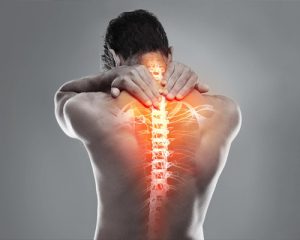 Introduction
IntroductionTramadol is a centrally acting analgesic that is most commonly used for the relief of mild to moderate pain. Tramadol may be useful for patients who are unlikely to benefit from non-opioid medications or to whom additional pain relief is needed in combination with other treatments. This guide is for patient and caregiver awareness and will address in-depth content about Tramadol, including its mechanism of action, use, side effects, dosage guidelines, and important warnings.
Tramadol acts in the brain and nervous system to change the way one feels and responds to pain. It is dual-acting: μ-opioid receptor agonist and norepinephrine and serotonin reuptake inhibitor. Because of this duality, it relieves pain and improves mood; for this reason, Tramadol is very useful in managing the patient’s pain.
Once ingested, tramadol undergoes hepatic metabolism to active metabolites, mainly O-desmethyltramadol, which binds to a central opioid receptor. Such binding action produces analgesia by altering perception and affective response to the pain. The antidepressant-like property of tramadol is conferred by inhibition of norepinephrine and serotonin uptake, which is advantageous in patients who suffer from chronic pain syndromes with psychological component.
Prescription Tramadol can be obtained in immediate-release, extended-release formulations, oral solutions, or injections. Adherence to the instructions given by a healthcare provider will maximize effectiveness while minimizing the potential dangers involved in proper use.
Tramadol is indicated for the treatment of moderate to moderately severe pain in adults, commonly such as:
The dose of Tramadol changes from patient to patient on the basis of various factors, like the condition of medical health, other medicines taken, and individual response against it. Some general suggestions include:
Never exceed the prescribed dosage as it can increase the risk of serious side effects and dependency.
Like every other medication, Tramadol has a good number of side effects; these can be classified according to severity and frequency so that they can be effectively anticipated and managed by patients and caregivers alike.
Usually mild side effects that tend to disappear over time as the body adapts to the medicine:
While less common, the following serious side effects require immediate medical attention:
Patients experiencing any of these serious side effects should seek emergency medical care.
Chronic use of Tramadol can lead to severe dependence and subsequent withdrawal effects upon its discontinuation. Patients should bring up their concerns about dependance with their healthcare provider, especially if they have a history of substance use disorder.
 Warnings Contraindications
Warnings ContraindicationsTramadol is not advised for use in patients who:
Interactions with numerous other medications are known for tramadol, with some elevating the risk of developing severe side effects. Hence, patients must report to their healthcare provider all current medicines, supplements, or even over-the-counter drugs they use, especially:
Caution in prescribing Tramadol in special populations is needed:
Many patients have shared their experiences with Tramadol, ranging from the benefits to the challenges in achieving pain management.
Jane shares: 47 years old “My doctor prescribed Tramadol after the surgery of my knee. It helped significantly because of which I could again resume my daily routine of walking with my dog and playing with my kids. In no time, I’ve been feeling myself again!”
John, 60, says: “I started taking Tramadol for chronic back pain, but it initially made me feel nauseous, but after talking to my doctor, who gave me an idea of how to deal with it, now it really works very well for pain relief.”
Linda, 35, states her concern, “I have been on Tramadol for a year and a half due to fibromyalgia. It really helps, but I’m always concerned that I might get hooked on it. I have been trying to bring this issue up to my doctor regularly and they are very helpful.”
Tramadol-a systemically used drug for pain management-may be considered a multi-focused agent for pain relief for many patients who confront such moderate to moderately-severe levels of pain. Knowledge regarding the Tramadol mechanism of action, appropriate use, side effects, and good communication with the health professional can improve the drug’s productiveness in pain relief. Always consult with your physician before altering any medications or treatment programs and promptly notify of any side effects or concerns. When used judiciously, Tramadol is definitely a useful agent in the armamentarium of pain management.
This guide wants to help patients and caregivers with the necessary insight to navigate the unknowns of pain management with Tramadol. Remember that efficient communication with healthcare providers will equally help in safe and optimal use of any drug.
Pain is a common experience that everyone goes through at some point in their lives. It can range from a mild discomfort to a debilitating sensation that affects daily activities. While pain is a natural response of the body to injury or illness, it can also be a sign of an underlying health issue. In this article, we will delve into the topic of pain relief, exploring its causes and effective solutions.
Pain can be caused by a variety of factors, including injury, illness, and chronic conditions. It can also be a result of emotional distress or psychological issues. Some common causes of pain include:
Pain relief can be achieved through various methods, depending on the cause and severity of the pain. Here are some effective solutions for managing pain:
Pain is a complex and subjective experience that affects individuals differently. It is essential to understand the underlying causes of pain to find effective solutions for relief. Whether it is through medication, physical therapy, or lifestyle changes, there are various options available for managing pain. It is crucial to consult with a healthcare professional to determine the best course of treatment for your specific situation.